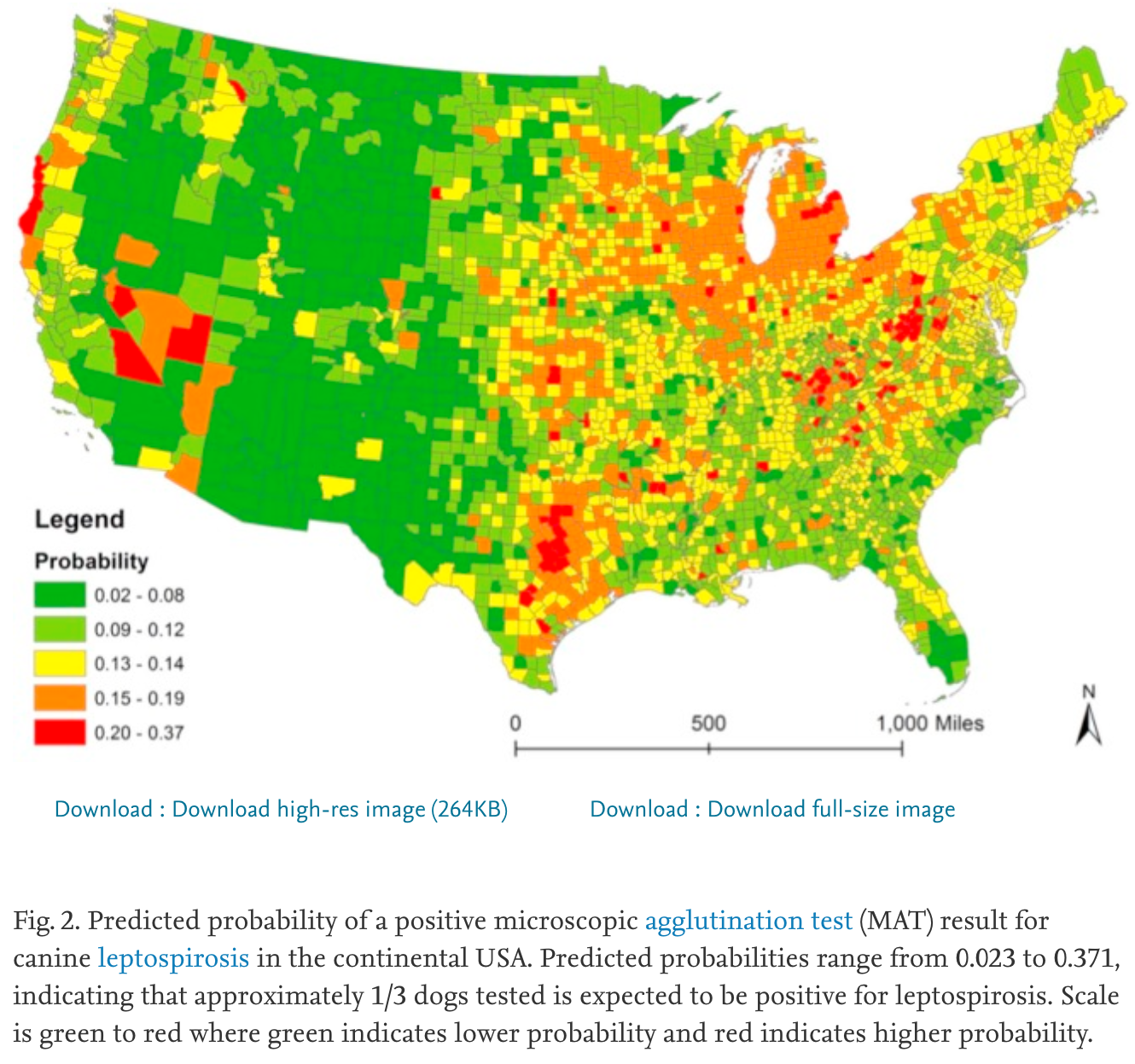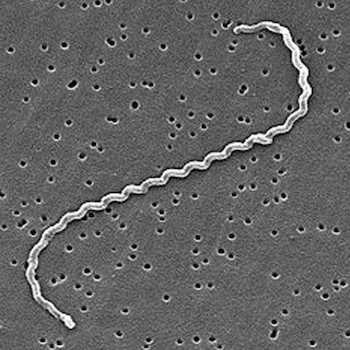There are several reports that an outbreak of leptospirosis is occurring among dogs in the western United States. Immediately, three questions come to mind: (1) What is leptospirosis? (2) How common is it? (3) Are anti-vaxxers to blame?
The third question is easiest to answer, so we'll address it first.
Are Anti-Vaxxers to Blame for the Leptospirosis Outbreak Among Dogs?
No. Though anti-vaxxers really are refusing to vaccinate their pets, we can't blame them for this outbreak (if it indeed qualifies as an outbreak). The American Veterinary Medical Association has a list of "core" and "non-core" vaccines for dogs. Rabies, for instance, is considered a core vaccine; the leptospirosis vaccine is considered non-core. It's only recommended if the vet thinks the dog may be at risk of acquiring the disease. A dog that lives primarily indoors would not need a leptospirosis shot.
Leptospirosis is an infection from a bacterium called Leptospira. As its name suggests, the bacterium is spiral-shaped and takes on a very odd appearance under the microscope. One of the species is named Leptospira interrogans, which is Latin for "asks." Why? Well, it looks like a question mark.
(Side note: The most infamous spiral-shaped bacterium is Treponema pallidum, the causative agent of syphilis. And the most famous victim of syphilis was Al Capone. Other than shape, syphilis and leptospirosis have little in common.)
Leptospirosis is transmitted through contact with urine, either directly or via contaminated water, where the bacteria can survive for several weeks. The bacteria enter the body by penetrating mucous membranes (e.g., those lining the eyes or mouth) or through small cuts in the skin. In both humans and dogs, disease symptoms can range from non-existent to flu-like to systemic and potentially fatal. Most are probably asymptomatic.
How Common Is Leptospirosis?
Among Americans, leptospirosis is uncommon. The CDC says that 100 to 150 Americans will get it each year, half of whom live in Puerto Rico. Worldwide, it's a different story: About 1 million people will become sick, and about 59,000 will die.
An attempt to quantify leptospirosis in dogs was published in 2017 in The Veterinary Journal. Based on data they had collected, the authors constructed a map depicting the likelihood of a positive leptospirosis test in each U.S. county:

Source: AM White, et al. The Veterinary Journal. 2017.
As shown above, in some of the worst counties (colored red) -- which are located in the East, Midwest, and a few portions of the West and Southwest -- the risk of a positive test could be as high as 1 in 3. However, note that this does not mean that a pet in that area has a 1 in 3 risk of getting leptospirosis. Instead, the data mean that if a sick dog is taken to the vet and the vet suspects leptospirosis, there's a 1 in 3 chance he's right.
So, is leptospirosis "on the rise" among dogs in states like Utah and Colorado, as headlines declare? Possibly. The authors of the aforementioned study think that incidence is increasing nationally. Maybe the optional leptospirosis shot for the pooch isn't a bad idea.
Textbook source: Patrick R. Murray, et al. Medical Microbiology (4th ed).


